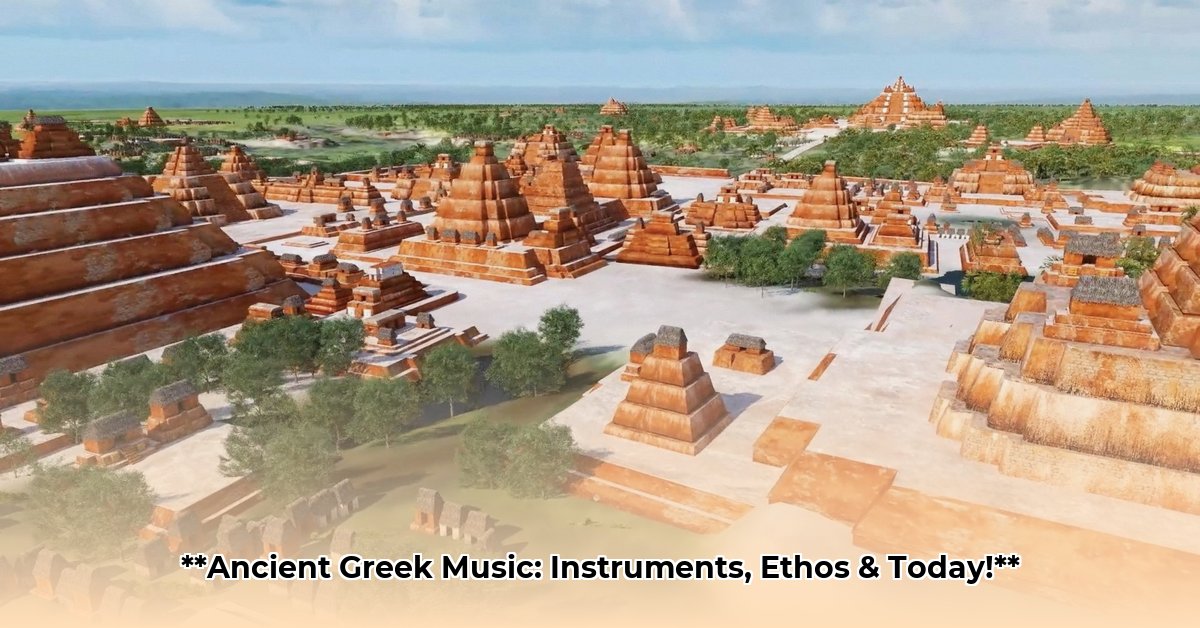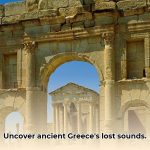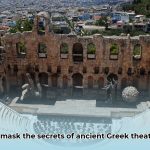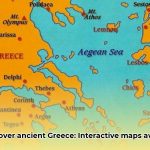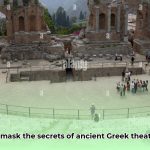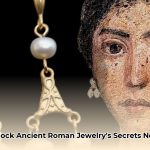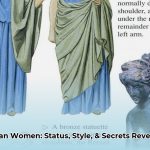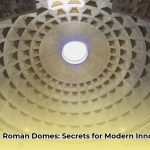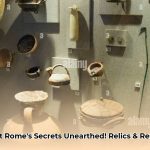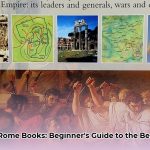Imagine a civilization where sound was not merely background but a foundational pillar of existence. In ancient Greece, music, or mousike (encompassing song, dance, and poetry), was profoundly integrated into nearly every aspect of life. From the solemnity of religious rites to the exhilaration of athletic contests, the wisdom of philosophical discourse, and the emotional depths of theatrical performances, music played an indispensable role, shaping character, reflecting cosmic harmony, and influencing societal norms.
While uncovering the precise sounds that filled their assemblies and celebrations presents a captivating challenge, archaeological discoveries, surviving fragments of notation, and extensive literary references provide compelling insights. The enduring influence of ancient Greek musical traditions reverberates through Western music theory and practice even today, offering a profound appreciation for its lasting impact.
The Omnipresent Soundscape of Ancient Greece
Music in ancient Greece was far more than entertainment; it was a pervasive force, an intrinsic part of daily life and grand ceremonies alike. It accompanied every significant event, from the joyous melodies of marriages and the mournful laments of funerals to the devout hymns of religious ceremonies. In the bustling marketplace, the tranquil countryside, or the hallowed halls of learning, music was ever-present.
Epic poetry, such as the works of Homer, was not simply recited but often chanted or sung, possibly accompanied by a lyre. This fusion of word and melody served not only to entertain but also to preserve oral traditions, convey moral lessons, and connect listeners to their shared heritage. The very word “music” derives from the Muses, the nine patron goddesses of creative and intellectual endeavors, underscoring its divine origin and profound significance to the ancient Greeks. This deep integration highlights the unparalleled cultural importance of ancient Greek music.
Divine Origins and Legendary Musicians
The ancient Greeks attributed the invention of music and musical instruments to the gods themselves, viewing this art form as a sacred gift to humanity. Hermes, for instance, is famously credited with crafting the first lyre from a tortoise shell, which he later gifted to Apollo, the revered god of music, poetry, and light. Athena, meanwhile, is said to have “found” or “invented” the aulos, a double-reed wind instrument, to mimic the lament of Medusa’s sisters. Even Pan, the god of the wild, is linked to the syrinx, or panpipes, fashioned from reeds.
Beyond the deities, legendary figures like Orpheus, the master-musician and lyre-player, captivated audiences with his enchanting melodies. His music was so potent it could charm wild beasts, make trees dance, and even soften the heart of Hades to retrieve his beloved Eurydice from the underworld. Amphion, another gifted musician, was said to have built the walls of Thebes merely by playing his golden lyre, moving stones into place with the power of his sound. These myths reflect the ancient Greek belief in music’s extraordinary, almost supernatural, power. However, not all musical contests ended harmoniously, as seen in the myth of Apollo’s brutal victory over the satyr Marsyas, who dared to challenge the god with his aulos, leading to Marsyas being flayed alive.
The Instruments of Antiquity: A Sonic Palette
The rich tapestry of ancient Greek music was woven from the diverse sounds of a variety of instruments, each with its distinct character and cultural associations. While many types existed, three were particularly prominent:
- Lyre: This strummed and occasionally plucked string instrument, often constructed with a tortoise-shell frame, was a popular folk instrument associated with the cult of Apollo. It typically featured seven or more gut strings tuned to specific modes. The lyre was widely used to accompany solo recitations and songs, and its mastery was a fundamental part of an aristocratic education. It was typically played while seated, held close to the body, often using a plectrum in the right hand and dampening strings with the left.
- Kithara: A more professional and robust version of the lyre, the kithara had a box-type wooden frame and was larger and heavier. It was held upright and played with a plectrum, often supported by a strap over the shoulder. As an “artist’s instrument,” it required extensive training and was favored by professional musicians for public concerts, choral performances, and competitions, marking it as a symbol of virtuosity.
- Aulos: Usually played as a double instrument, consisting of two pipes with double reeds (similar to a modern oboe), the aulos was often held by a mouth-band to steady both pipes. Modern reconstructions suggest it produced a low, resonant, clarinet-like sound. It was strongly associated with the cult of Dionysus and played a central role in religious rituals, festivals, and dramatic performances.
- Syrinx (Pan Flute): This ancient wind instrument was based on the principle of the stopped pipe, composed of a series of pipes of gradually increasing length. Sound was produced by blowing across the open top of each pipe, creating melancholic or rustic tones. It was especially popular among shepherds and often depicted with the god Pan.
- Hydraulis: A sophisticated Hellenistic invention, this keyboard instrument was a forerunner of the modern pipe organ. It used water pressure to supply a constant flow of air to its pipes, producing a powerful and sustained sound, often showcased in grand public spectacles.
- Salpinx: A brass trumpet used primarily for military calls and religious ceremonies, its clear, piercing sound would have dictated commands on the battlefield and announced events at major games, including the Olympics.
- Percussion Instruments: Instruments like the tympanum (frame drum/tambourine), crotalum (clapper/castanet), and koudounia (copper bells) provided rhythmic accompaniment, particularly in religious dances and processions associated with deities like Dionysus and Cybele.
The Philosophical Heart: Music Theory and Ethos
Ancient Greek musical thought was remarkably advanced and deeply intertwined with philosophy and mathematics. The Pythagoreans, followers of the philosopher-mathematician Pythagoras, made foundational discoveries about harmonics, recognizing that musical intervals like the octave (2:1 ratio), fifth (3:2), and fourth (4:3) could be expressed through precise mathematical ratios. Pythagoras’s invention of the monochord, a single-stringed instrument with a movable bridge, allowed him to systematically study the relationship between string lengths and pitch, leading to the idea of the “music of the spheres”—the belief that the cosmos itself vibrated with mathematical harmony.
Beyond mere acoustics, the Greeks developed a complex system of musical modes, akin to our modern scales, but each imbued with a distinct ethos—a specific ethical or emotional quality. For example, the Dorian mode was thought to evoke seriousness and courage, while the Phrygian mode was associated with passion and ecstasy, and the Lydian with melancholy or lamentation. This concept of ethos underscored music’s profound ability to shape character and influence behavior, leading philosophers like Plato to advocate for the careful regulation of music in his ideal republic, banning modes he considered decadent or morally subversive.
Ancient Greek scales also differed from modern Western scales by incorporating microtones (intervals smaller than a modern half-step), adding subtle nuances and emotional depth that would sound “out of tune” to an unaccustomed modern ear. While the predominant texture of ancient Greek music was monophonic (single melody lines), evidence from texts like Euripides’ Orestes fragment suggests that simultaneous notes, or a kind of heterophony (slight variations on a melody played concurrently), were sometimes employed, though likely considered an advanced technique.
Music’s Integral Role in Society
Music permeated every layer of ancient Greek society, fulfilling diverse functions:
- Education: Music and gymnastics formed the two main pillars of education for young Greek men. Philosophers like Aristotle believed music was essential for cultivating character and promoting moral development, advocating for its inclusion in schooling, particularly the lyre for its disciplined study. He argued that music, by engaging the soul, fostered virtue and provided a noble form of leisure, necessary for a well-rounded citizen.
- Religious Ceremonies: From sacrifices to libations and initiations, music was central to religious observance. The aulos often accompanied offerings to deities, and specific hymns like the paean (sung to Apollo) and dithyramb (sung to Dionysus) were vital components of cult rituals, sometimes inducing religious ecstasy for divination.
- Theater and Drama: Ancient Greek tragedy and comedy evolved from musical performances. The chorus, integral to Greek drama, narrated much of the story through song and dance, engaging in dialogue with a single actor who might also perform through song. Playwrights were expected to compose not only the script but also the music and choreography.
- Festivals and Competitions: Major pan-Hellenic festivals like the Pythian Games at Delphi and the Panathenaia in Athens featured prestigious musical competitions alongside athletic events. Victors, often professional musicians known as melopoioi (makers of songs), attained elevated status, demonstrating the high regard for musical excellence.
- Social Gatherings: Drinking parties, or symposia, were incomplete without music. Guests would sing skolia (drinking songs), often accompanied by the aulos or lyre, contributing to the communal atmosphere. Women also enjoyed music in their homes, playing stringed instruments or singing while performing daily chores.
- Military and Daily Life: Trumpets (salpinx) conveyed commands on the battlefield, while auloi and percussion instruments helped oarsmen maintain rhythm in triremes. Shepherds played pipes, and laborers sometimes worked to the rhythm of music.
Reconstructing Ancient Greek Music: From Fragments to Sound
The quest to resurrect the sounds of ancient Greece is a complex and ongoing endeavor, blending meticulous scholarship with innovative experimental archaeology. While the task is challenging, significant progress has been made in bringing this enigmatic art form closer to our ears.
The primary hurdle lies in the scarcity of complete musical scores. Only around 60 fragmentary pieces of ancient Greek music survive, inscribed on papyrus or stone, such as the famous Seikilos epitaph (the most complete surviving melody) and excerpts from Euripides’ Orestes. These notations, featuring letters and symbols above the lyrical text, offer crucial clues to pitch and rhythm.
Modern reconstruction efforts involve several critical steps:
- Instrumental Archaeology: Researchers painstakingly recreate ancient instruments like the aulos and lyre, based on archaeological finds and depictions in art. These reconstructions, played by skilled musicians, offer invaluable insights into the instruments’ timbre, pitch range, and playability.
- Deciphering Notation and Rhythms: Scholars meticulously interpret the surviving notation, analyzing how pitches relate to one another and aligning musical rhythm with the quantitative meter of the Greek poetry, which was based on the duration of syllables.
- Applying Theoretical Principles: The detailed writings of ancient theorists like Aristoxenus, Plato, and Ptolemy provide fundamental insights into their harmonic systems, modes, and tuning practices, guiding modern interpretations.
- Acoustic Science: Modern acoustic analysis helps understand the physical properties of recreated instruments and how sound would have propagated in ancient performance spaces.
This multi-faceted approach, while inherently interpretive, has allowed for increasingly informed and compelling performances of ancient Greek music, bringing sounds from millennia ago to life.
Challenges and Nuances in Reconstruction: A Scholarly Debate
Despite remarkable progress, the reconstruction of ancient Greek music is not without its complexities and debates. Claims of “100% accurate reconstruction” are often met with skepticism within the academic community, highlighting the interpretive nature of the endeavor. The biggest critical mistakes in reconstructing ancient Greek music stem from ethnocentric biases and the inherent difficulties in translating ancient sonic intentions into a modern ear’s framework.
Several key challenges persist:
- Interpreting Notation: While notations provide pitch, nuances of intonation, ornamentation, and microtones are harder to capture definitively. The “syntonic comma”–a tiny, mathematically derived imperfection in tuning–suggests that ancient Greeks might have prioritized expressive intonation over rigid mathematical purity in certain contexts, hinting at a “Dionysian” (passionate, expressive) counterpoint to “Apollonian” (orderly, rational) ideals.
- The Role of Improvisation: Ancient performances likely involved a degree of improvisation. Recreating this dynamic, spontaneous element within fixed compositions is difficult, and overly rigid modern interpretations might miss the original fluidity.
- Missing Context: Music was deeply embedded in its socio-cultural context. Reconstructing the sound alone cannot fully convey the original emotional impact, the audience’s expectations, or the specific ritualistic significance that amplified the musical experience. Modern biases, such as imposing contemporary aesthetic preferences for harmony or melody, can inadvertently distort an “authentic” reconstruction.
- Oral Tradition: Much ancient music was transmitted orally. Written fragments are snapshots, not comprehensive guides to live performance practices, which might have varied significantly.
To navigate these complexities, scholars emphasize a multi-disciplinary approach: employing experimental archaeology to test instrument replicas, developing digital databases for integrating diverse forms of evidence, and fostering collaboration among musicologists, performers, archaeologists, and philologists. The goal is not a sterile imitation, but a living, breathing understanding that embraces the knowns, acknowledges the unknowns, and fosters continued discovery.
Experiencing Ancient Greek Music Today: Bridging Millennia
The pursuit of understanding ancient Greek music is not merely an academic exercise; it offers unique opportunities to connect with the past and enrich our contemporary understanding of music’s profound human role.
Key Takeaways for Modern Enthusiasts:
- Ongoing Discoveries: Recent scholarly efforts continually refine our understanding of ancient Greek music reconstructions, offering ever-clearer insights into their cultural significance.
- Philosophical Depth: The intertwining of music with ancient philosophy, mathematics, and medicine underscores its fundamental role in shaping ancient society’s worldview.
- Modern Relevance: Modern scientific research increasingly validates ancient insights into music’s physiological and psychological effects, confirming its ability to stimulate dopamine release, enhance memory recall, and improve focus—mirroring ancient beliefs in music’s therapeutic powers.
Engaging with Reconstructed Music: A Modern Guide
Here are practical pathways to connect with ancient Greek music today:
- Explore Online Performances and Recordings: Numerous academic and popular platforms, including YouTube channels and dedicated music archaeology websites, host performances of reconstructed Greek music. These digital resources provide widespread access to scholarly interpretations and musical experimentations.
- Attend Live Concerts and Workshops: Look for specialized concerts, theatrical productions, or university-hosted workshops that feature ancient Greek instruments or delve into their musical theory. These events offer immersive educational experiences and a tangible connection to the past.
- Engage with Replicated Instruments: For those with a musical background, exploring replicas of ancient Greek instruments, such as the lyre or aulos, can provide unique, hands-on insights into their playability, ergonomic characteristics, and sonic potentials. This direct interaction deepens understanding beyond passive listening.
Integrating Greek Modes into Modern Compositions
The ancient Greek concept of ethos and their distinct modes offer a rich palette for contemporary composers, potentially introducing new emotional and sonic textures into modern music.
| Feature | Ancient Greek Music Aspect | Modern Application in Music Composition |
|---|---|---|
| Musical Modes | Distinct scales (Dorian, Phrygian, Lydian, Mixolydian, Hypodorian, Hypophrygian) each associated with a unique ethos (e.g., Dorian for strength, Phrygian for passion, Lydian for sorrow). | Composers can integrate these modes into film scores, video game soundtracks, or contemporary classical pieces to evoke specific, nuanced emotions. For example, using the Phrygian mode can instantly create a sense of mystery or suspense, while the Lydian mode might suggest brightness or longing. |
| Instruments | Lyre, Aulos, Kithara, Pan flutes, Hydraulis – each possessing unique timbres, resonance, and playing techniques. | Incorporating actual replicas of these instruments, or using modern synthesizers and orchestration to mimic their distinct timbres and textures, can add unique sonic character and historical depth to contemporary pieces. This can create evocative soundscapes. |
| Rhythmic Principles | Strict adherence to poetic meter and syllable duration, creating complex and varied rhythmic patterns. | Modern composers can explore rhythmic structures based on ancient poetic meters, moving beyond common time signatures to create more intricate, dynamic, and text-responsive rhythmic frameworks. |
| Microtonality | Use of intervals smaller than a half-step, adding subtly “bent” or “floating” pitches not typical in standard Western tuning. | Experimenting with microtonal intervals can introduce unique expressive qualities and an “ancient” feel to melodies, challenging conventional harmonic expectations and opening new avenues for sonic exploration in genres from ambient to experimental music. |
The painstaking reconstruction of ancient Greek music is an ongoing journey, a dialogue between past and present. By actively engaging with these sounds and the profound ideas behind them, we gain not only a richer understanding of a pivotal civilization but also a deeper appreciation for the enduring, multifaceted power of music to shape human experience.
- Unlock Ancient Roman Jewelry’s Secrets: History, Materials, & Symbolism Revealed - August 14, 2025
- Unveiling Ancient Roman Mythical Creatures: Legends, Powers & Origins Defined for Today’s Enthusiast - August 14, 2025
- Unlock Ancient Secrets: Ancient Roman Attire Women, Status, & Materials [Guide] - August 14, 2025
